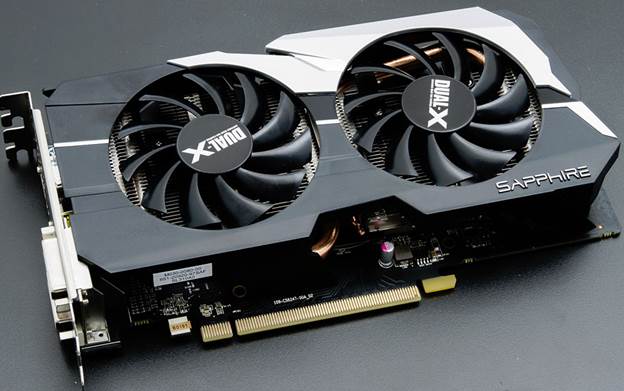AMD’s latest GPU gets an overclock and a
custom cooler
While there isn’t
expected to be major GPU launch for a while, there are still battles to be
fought in the lucrative mid-range arena, and both AMD and Nvidia have launched
cards recently in the $151 to $226.5 price range. AMD’s effort is based on the
Bonnaire XT GPU, a new 28nm chip, and named the HD 7790 1GB – sitting, as it
does, between the HD 7770 1GB and HD 7850 2GB in its official product line.

Sapphire Radeon HD 7790 1GB Dual-X
Stock versions of this
card cost $181.2, but for less than a tenner extra you can net yourself
Sapphire’s Dual-X version, which features factory overclocks and a custom
cooler. The card explicitly targets gamers playing at 1,920 x 1,080, which
currently puts it in an awkward spot, considering that HD 7850 1GB cards can
still be found for $188.5. At 1080p, those cards perform almost as well as the
2GB versions, and as such are a real bargain. However, stock levels are
swindling as that model is being phased out. This, further down the line, will
leave this price area to the HD 7790 1GB.
The GPU itself
consists of 14 of AMD’s Compute Units, leaving it with a total of 56 texture
units and 896 stream processors. The front end is more powerful than the other
7700-series cards, and in this area it joins the ranks of the 7800 and 7900-series
with a pair each of geometry engines and rasterizers. Sapphire has overclocked
the card to 1,075MHz from its stock speed of 1GHz
“Sapphire has overclocked the card to
1,075MHz from its stock speeds of 1GHz”
The card utilizes a
128-bit memory interface and has 16 ROPs. While those numbers may look the same
as the HD 7770 1GB at first glance, here the GDDR5 memory runs a third faster
than the lesser card, being closed to 6GHz effective by default. Sapphire has
increased this to 6.4GHz, giving its card a total memory bandwidth of
102.4GB/sec.

Sapphire has overclocked the card to
1,075MHz from its stock speeds of 1GHz
Sapphire’s Dual-X card
is a dual slot model that’s 216mm long, although oddly there’s around 2” of
unused PC B space on the far side, which suggests the card could be made
smaller. Outputs include two dual-link DVIs, a DisplayPort and a HDMI
connection. A single large heatsink draws heat away from both the GPU and the
memory, with a duo of copper heat pipes feeding into an aluminum fin stack.
This in turn is cooled by a pair of 80mm fans which exhaust hot air back into
your chassis.
“The Dual-X cooling does a great job of
keeping both noise levels and temperatures low”
Besides the GPU and
four memory chips, the PCB has a single 6-in PCI-E power connection. Power is
then delivered to the GPU via four power phases, with an extra one serving the
memory too. There’s also a single CrossFire bridge to enable its use multi-GPU
set-ups.

The Dual-X cooling does a great job of
keeping both noise levels and temperatures low
Synthetic benchmarks
like Unigine Heaven demonstrate that there is more power in the HD 7790 1GB
than in that of its rival form the green side, the GTX 650 Ti 1GB, which
currently costs around $30.2 less. It also performs roughly in between the HD
7770 1GB and the faster HD 7850 2GB, which is exactly what you’d hope for.
Real world
performance, however, puts the HD 7790 1GB on a much more level playing field
with the GTX 650 Ti 1GB, which is a shame given the price premium AMD’s card
carries. It’s not always the case, but in games like Crysis 3 and Battlefield
3, for example, at 1,920 x 1,080 the cards are practically neck and neck.
Future driver updates could separate the cards further, but for now the new AMD
GPU doesn’t have the lead on Nvidia’s cheaper card as often as it should.
The card’s power
consumption is certainly something to be praised, and it comes across as rather
efficient. It draws only very slightly more power than the cheaper and lower HD
7770 1GB, and, even more impressively, actually draws significantly less power
than a GTX 650 Ti 1GBB despite being faster and having overclocks applied to
it. The Dual-X cooling also does a great job of keeping both noise levels and
temperatures low, and Sapphire has produced a stable card too, with my sample
able to overclock up to 1.2GHz, a full 20% improvement on the stock speeds.

The dual-X card has a meaningful
overclock and an effective and quiet cooler, so Sapphire should be praised for
its efforts
Despite these positives,
it’s hard to recommend the card, as price and performance are everything in the
mid-range. The dual-X card has a meaningful overclock and an effective and
quiet cooler, so Sapphire should be praised for its efforts. However, if
they’re still available, HD 7850 1GB cards should be your choice in this price
range. If not, both the HD 7850 2GB and GTX 650 Ti Boost 2GB are around $211.4,
and well worth the extra money in terms of both performance and
future-proofing, thanks to their extra 1GB of onboard memory.
A nice card, but there are better
mid-range options available.
|
Details
·
Price: $193.20
·
Manufacturer: Sapphire
·
Website: www.sapphire.com
·
Required Spec: 1x free PCI-E expansion slot,
1x6-pin PCI-E power connection
Ratings
·
Quality: 6/10
·
Value: 6/10
·
Overall: 6/10
|